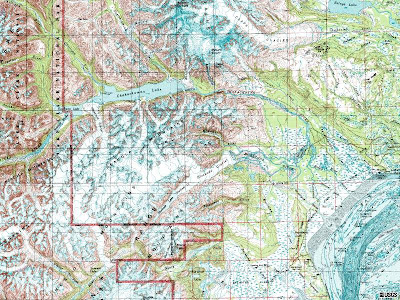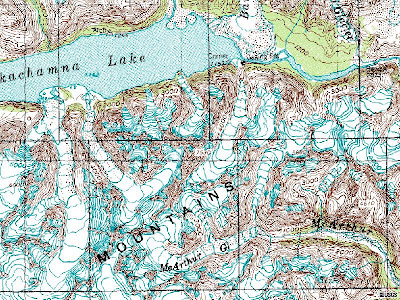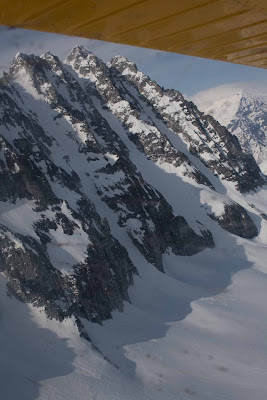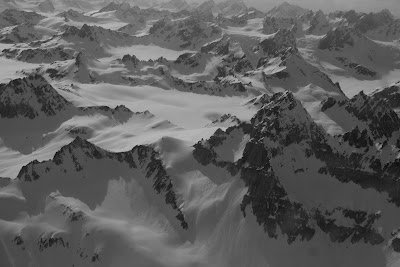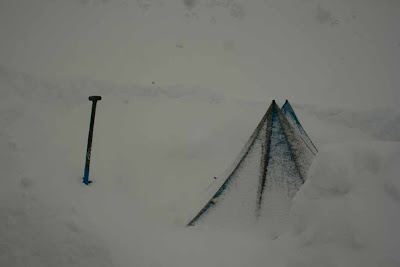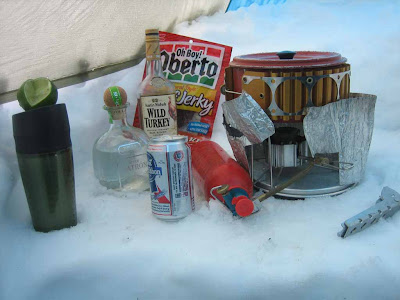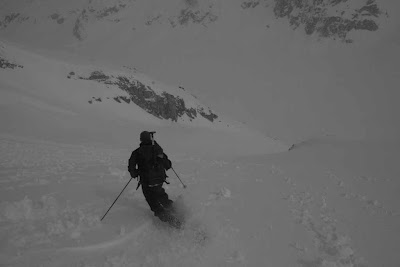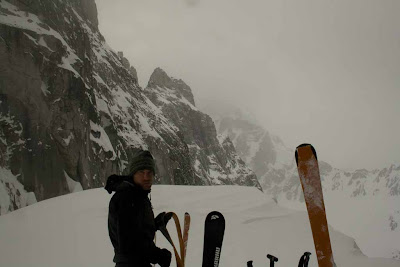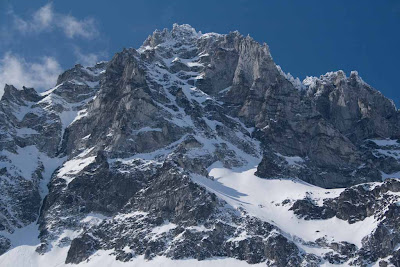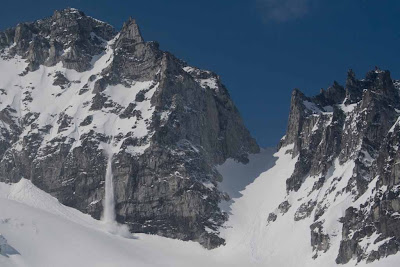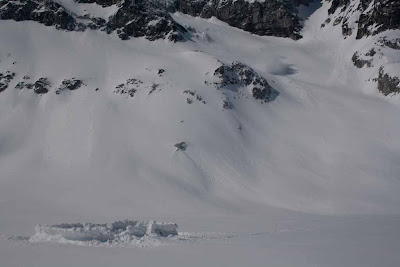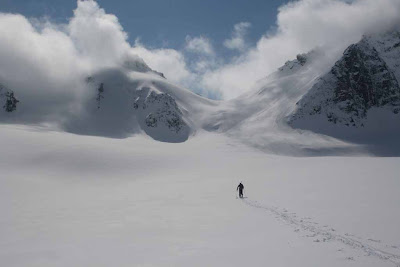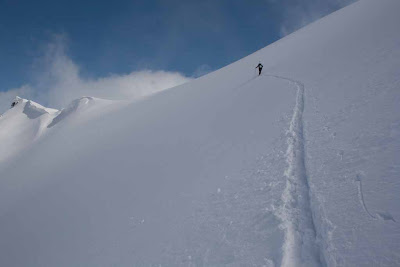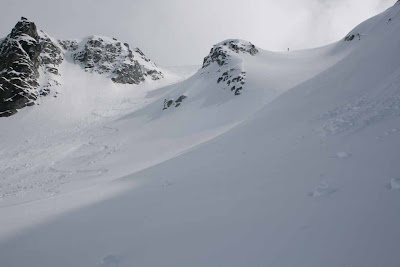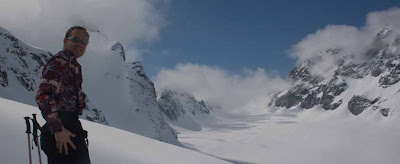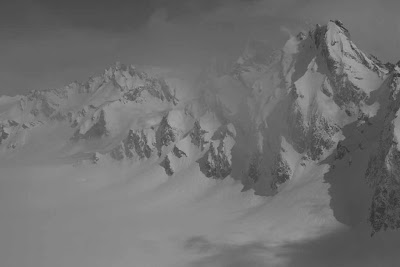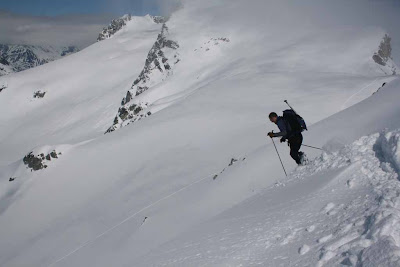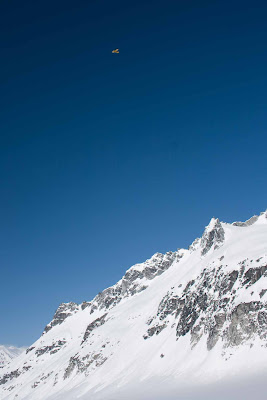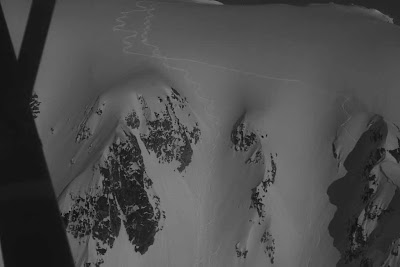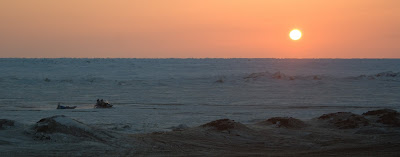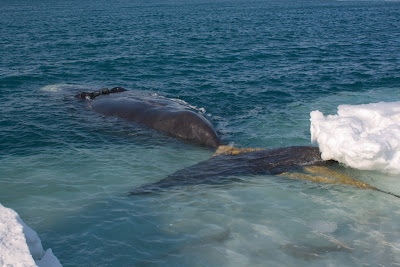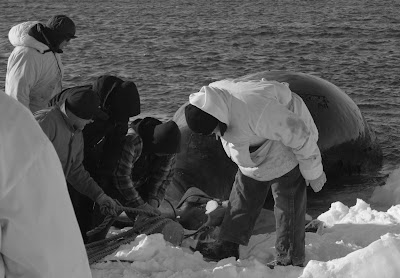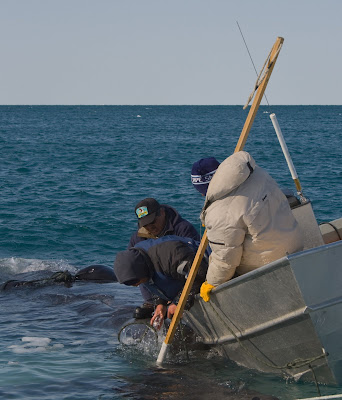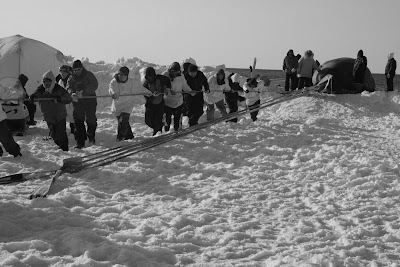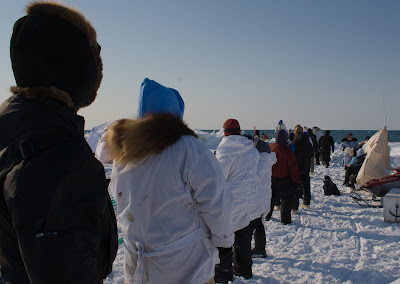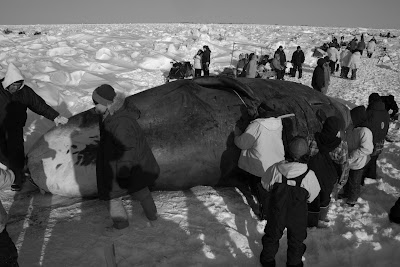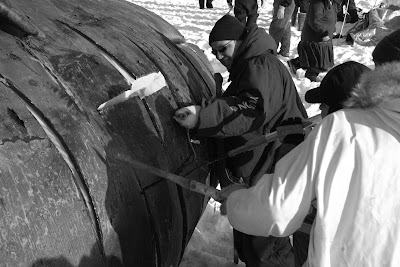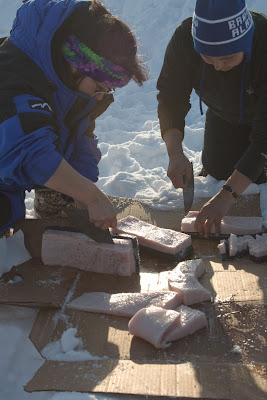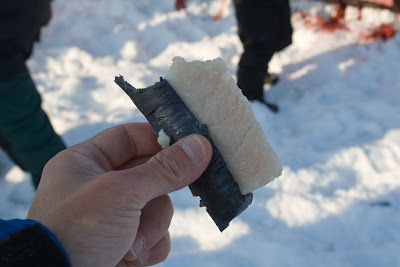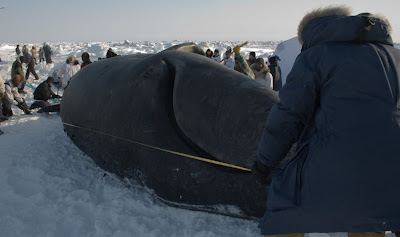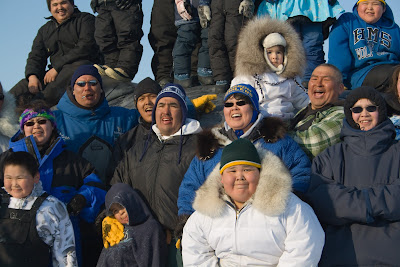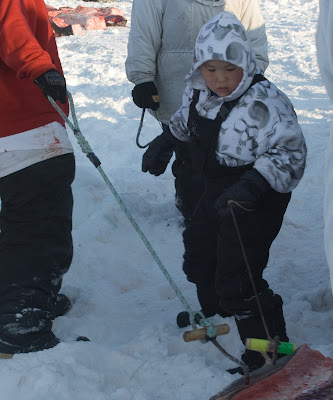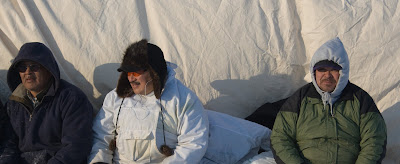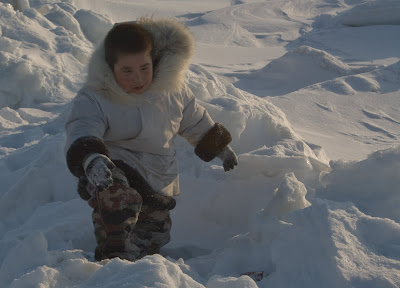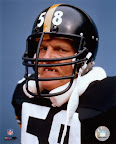“Then Poseidon and Apollo joined to work erosion of the wall by fury of rivers borne in flood against it.” H.A. Guerber, The Myths of Greece and Rome

Thank the gods for creating
Kalymnos! Endless walls of limestone rise up out of the sea, and great caves carved over
millennia look out over the Mediterranean. Waves of rock rise from the arid landscape and seem to break down upon you. Gravity stretches surrealistic
tuffas towards Earth while the wind whips the foam off the sea and waves crash on shore. “Cling, clang” goes the goat bell – “
baaahhhh baaaahhhh.”
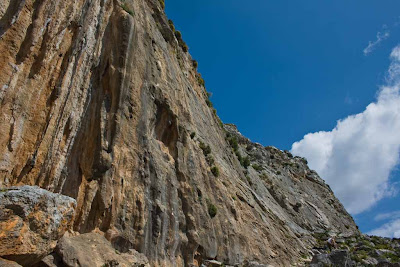
Honeymoon 2008. Catchy
moniker, excellent annual tradition, but “words all fail the magic prize.” How can I describe the magic? Quote liberally from Greek myth? Talk of the mystery – the history – the ancient ruins? Oh yeah, and the sheer joy of the climbing. How can I weave it all together into a passable account?
Ain’t no way its gonna happen. Think writing can transport you to a foreign land as if you were really there? Think again - and start making your plans. If you’
ve ever clipped a bolt you need to visit
Kalymnos.
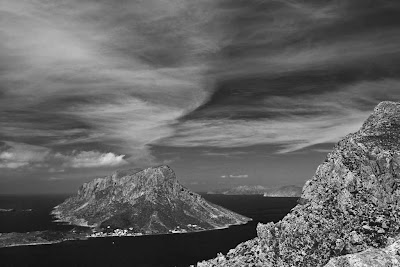
Destination sport climbing. Originally, I was skeptical. No real mountains? No gear? No glaciers? No alpine starts? Am I really going to take two weeks of precious vacation time to clip bolts? For awhile I refused to consider it an option. Then, in 2005, Kristin talked me into it by suggesting Thailand
as an adventure. Oh yeah – good times. So why not try it again? Limestone – bolts – sun – water – seems like a pretty good combination. Fast forward to March, 2008, and we’re packing for Greece.
The trip started as planned. Walk out the front door, catch a bus, hop on the Max train to the airport, fly to Frankfurt, fly to Athens, take a subway to
Syntagma Square, take the subway back to the airport the next morning, catch another plane to
Kalymn…..
screeeeeeccchhh. Hold it right there.
Trip recommendation #1. Don’t book a flight to
Kalymnos! Fly to
Kos, and take the ferry – or just take the boat from Athens. They built the airport on
Kalymnos on the top of a mountain on an island with no trees. The area is notorious for the
meltemi winds that blow from the north under the control of the ancient Greek god Boreas. When the wind blows, the planes sit on the runway. The wind blew just about every day we were there.
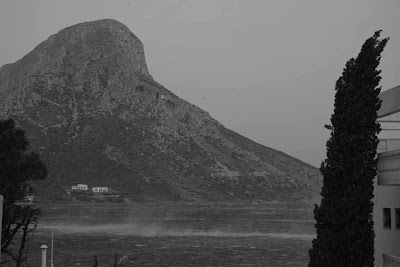
We ended paying extra to catch a flight to
Kos, which left Athens at 7 pm. The plane was packed with people who all wanted to get to
Kalymnos that night, and the ferries
weren’t running. The plane lands, and dozens of people rush to the street to catch one of the few taxis so they can rush to the dock to catch a ferry that may or may not be running.
The taxis leave, and we’re sitting on the curb with a Greek family from New York who are moving to
Kalymnos with their baby and twenty
duffle bags in tow. Two guys in a dump truck drive by and with a New York whistle this guy flags down the truck and in we go.
Ok – insert plane to
Kos,
dumptruck from airport to dock.
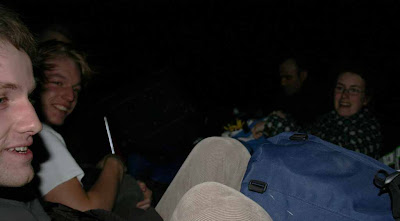
Then what? Turns out one of the locals is running a covert and highly illegal ferry operation on his boat the
Anna Maria. Problem is he only has room for so many people before his boat will sink to the bottom of the Med. By the time we get there, he’s already left for the first 1.5 hour round trip. By the time he gets back, we’re waiting – with a lot of other people.
The
Anna Maria pulls up to the dock and people jostle for position. I can’t bring myself to elbow through the crowd – Claude Remy and his 80-year old father, mothers with children, a local guy and his cat, a doctor and nurse and several cylinders of gas, dozens of
duffle bags, dirt-bag climbers from all over Europe. The
gunnels are sinking quick. F@*# it. We decided to wait.
We
weren’t the only ones shut down. We chatted up a few Austrians out on holiday. At 20 and 22 years old, these kids were in the prime of their drinking careers. They quickly found the closest bar and came back armed with half a dozen large bottles of Heineken. An hour and a half later, they were stupid drunk and stumbling towards the
Anna Maria with a couple more bottles in hand. Just don’t miss the boat!
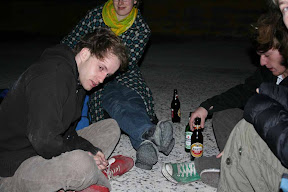

Lucky for us, though, they had a
pre-arranged room and a ride from the dock on
Kalymnos to the studio apartments in
Massouri on the other side of the island. We tagged along and lucked out, finding a free ride and a nice room at midnight without any prior reservations.
Ok – insert covert ride on
Anna Maria from
Kos to
Kalymnos, midnight ride in sedan from dock in
Pothia to
Massouri – and we’re there!
Trip recommendation #2. Book your room ahead of time! Don’t be a dumb ass like us and wing it. Nobody mans the desk at midnight, and most business is conducted by cell phone and
internet. Lock a place up for at least the first couple of nights and then you can shop around. Don’t expect to walk into town and walk from place to place to find your room.
The next morning we woke up, looked out the window, and saw blue sky, walls of limestone, and the Med. By sheer luck, we got set up in a beach-front studio apartment in the middle of town that was clean with a well-stocked kitchen, great views of the water and a decent
pre-season price.
Woot!
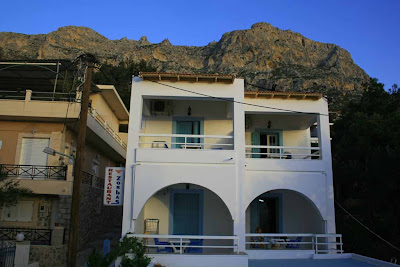
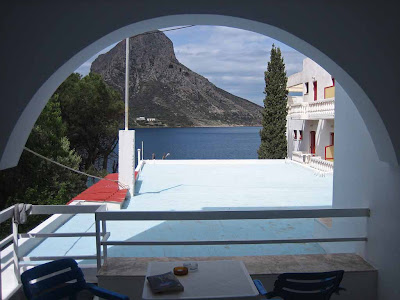
Thus started a 12-day run of the most incredible sport climbing I have ever done. The west coast of
Kalymnos is lined with cliff after cliff of clean, steep, featured limestone. Since it all started in the mid-90s, mostly European climbers have developed dozens of sectors and put up close to 1000 routes ranging from 3rd class to 5.14d. No matter how good a climber you are, you will find more than enough to keep you happy for two solid weeks or more.

We fell into a delicious routine of waking up to eggs and tea and maybe some stretching on the front porch. Then we’d hop on our trusty pink scooter and putter off along the coastal roads looking for the next towering wall of limestone to explore. We’d park near an old gravel road and walk off up the hillside on a well-marked trail, shooing away goats and brushing our hands over limestone boulders as we anxiously made time to the base of the routes. 20-30 minutes later we’d pull up to a crag with 10-30 3-4 star routes.
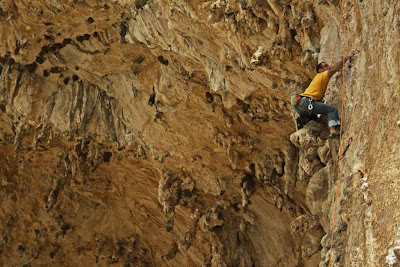
Then we’d climb. The walls start out low angle, and as they rise up from the Earth they start to steepen and arc over head. The first bolt is almost always less than 10 easy feet from the ground. The rest are drilled almost on top of each other. Friendly bolts, route names painted in blue, soft grades, steep rock, lots of features. This is an ideal place to push hard, because you won’t get hurt unless you do something really stupid.
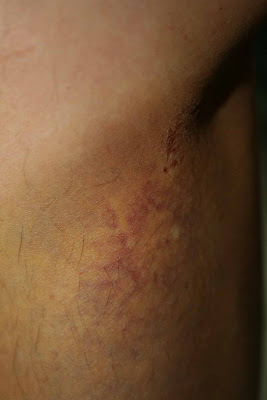 Ok
Ok, well you won’t get REALLY hurt.
The first couple of days, we ended up on the same routine as a large group of Spanish and Portuguese climbers on vacation for Easter week. They traveled
en masse, with crying babies, non-climber family members, and lots of kids. But they were nice, and damn strong. Even the weak ones were climbing 5.12, and the strongest of the strong would send 80 meter 5.13s up the roofs of huge
tuffa-lined caves.
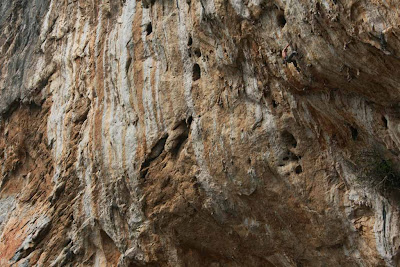
They would tie in as their friends reminded them - “
tranquilo,
tranquilo.” A few moves to the first bolt, then the rock would kick back and they’d stare up through the holds trying to figure out the moves. A couple of deep breaths and they’d near the crux. Then everyone on the ground would change their tune – “
VENGA!
VENGA!” Now a throw for the thank god jug, or a sketchy move off a rounded pinch. Almost always, they’d stick the move or take at the bolt – we saw very few whippers.
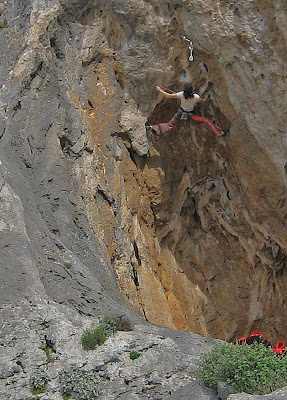
At the end of the day, we’d pack up our rack of 15 draws, hop back on the pink scooter, chug a few Red Bulls, readjust our
lycra tights, lube up our
gri-
gris, change the batteries in our boom box, and then drive back to town to hang out for the evening with the rest of the sport climbers.
Greece – Ouzo – partying – you’d think there would be lots of partying right? Not so. At least not this time of year. We showed up early in the season, and a lot of places
weren’t open. Folks would head out for a late dinner, but the social scene was mellow. Most evenings we would head to the
Glaros Bar for a beer with Steve and Sue. Classic characters those two. They set up shop here a long time ago before the climbing scene developed and have been here since. They keep information on new routes, hand out bolts and drill bits to developers, and keep track of the climbing scene on the island.
 Trip Recommendation #3
Trip Recommendation #3. Go hang out at the
Glaros Bar and chat up Steve and Sue. They’re entertaining as hell. Steve hails from the UK but has been in Greece for years. He’s got a cynical, biting, self-deprecating sense of humor that he weaves through endless tales of motorcycle racing, climbing with the Spokane Mountaineers, and managing drunk Danish tourists. Go meet him – its worth it. He’ll even go climbing with you, but you may end up in one of his not-so-flattering stories!
Anyway, he’s worth talking to just to get a better sense of the climbing history on the island. We got to meet a couple of vets that had been developing routes for awhile – Hans, the Remy Bros., Christian. Climbing is relatively new to the island but already has a pretty rich history of personalities and stories.
So we kept this up for the next two weeks. Eat, sleep, climb, drink beer, talk shite, drive around on a scooter, repeat repeat repeat. Sounds awful huh?
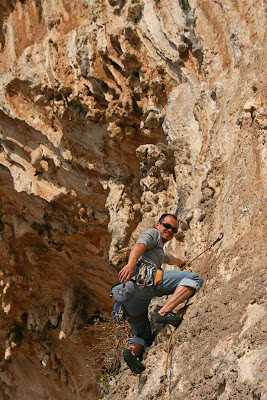
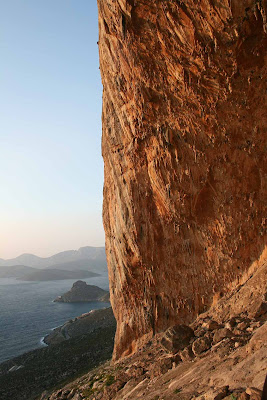
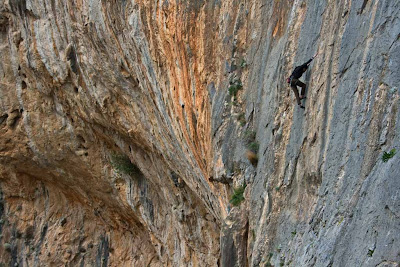
Out of the 12 days we were there, we took two full rest days. One we used to explore the northern reaches of the island – go explore the cape out beyond
Emporios with the solar powered antenna on top. Catch an afternoon drink and some mammoth calamari at the dockside
café, and then ride back to town during the sunset gazing up at the routes you want to climb the next day.
The other rest day we used to check out a parade in
Pothia, the main village on the island. The Greeks were celebrating the beginning of the war of independence from Turkey in 1821. All the kids on the island dressed up in garb and marched with the military. Locals packed all the
streetside cafes, and the
Nescafe flowed like wine from the chalice of Dionysus.
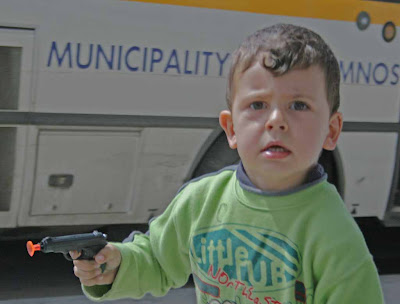
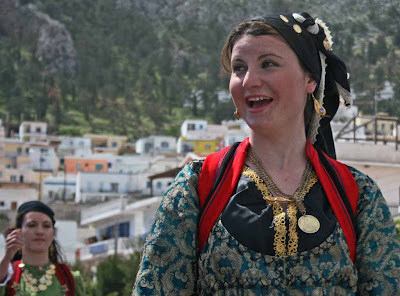
In the end, the trip offered everything you can ask for from a climbing vacation. A new culture, the mystery of the history of the island, spectacular routes in a fabulous setting, the intersection of old and new, east and west, Red Bull and Vodka, lycra and polypro. Destination sport climbing at its finest. Go find out for yourself! And let us know how it went.
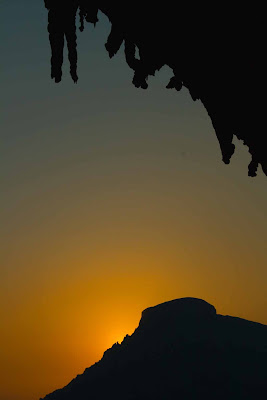
Oh yeah, and whatever happened to the Poseidon of that earlier quote at the beginning of this tale? He used to live here.
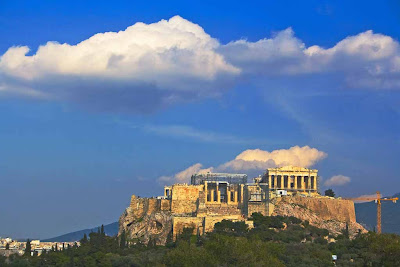
The Christianity took over with promises of eternal fun and happiness!
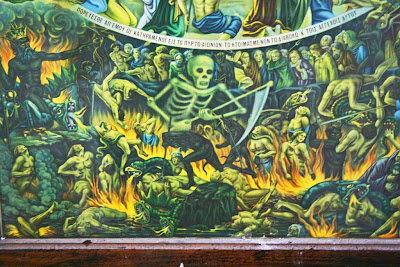
Now
Poseiden's had a change in his job description and you can find him here.
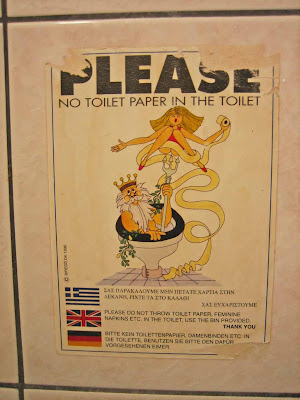
But he still gets to enjoy these.



